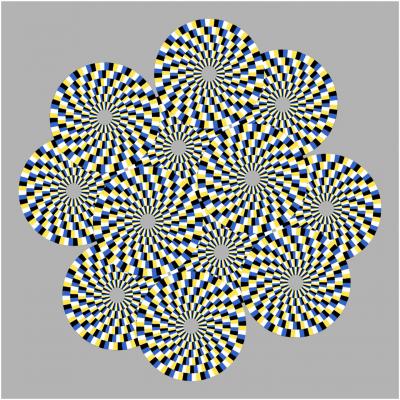
In this stationary image, viewers should see the circles rotating in different directions. The effect is particularly pronounced when the viewer’s eyes move or blink. (Illusion credit to A. Kitaoka; illustrated by R. Tanaka)
Why people perceive motion in some static images has mystified not only those who view these optical illusions but neuroscientists who have tried to explain the phenomenon. Now Yale neuroscientists have found some answers in the eyes of flies, they report Aug. 24 in the journal Proceedings of the National Academy of Sciences.
It turns out that flies are fooled by optical illusions as easily as humans.
Based on their data, the researchers theorized that the optical illusion results from small imbalances in how the different types of motion detectors contribute to how flies respond, or don’t respond, to illusions.